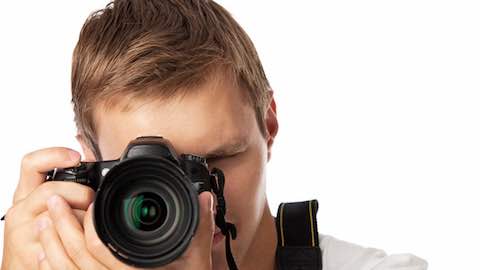- MENU
- HOME
- SEARCH
- WORLD
- MAIN
- AFRICA
- ASIA
- BALKANS
- EUROPE
- LATIN AMERICA
- MIDDLE EAST
- United Kingdom
- United States
- Argentina
- Australia
- Austria
- Benelux
- Brazil
- Canada
- China
- France
- Germany
- Greece
- Hungary
- India
- Indonesia
- Ireland
- Israel
- Italy
- Japan
- Korea
- Mexico
- New Zealand
- Pakistan
- Philippines
- Poland
- Russia
- South Africa
- Spain
- Taiwan
- Turkey
- USA
- BUSINESS
- WEALTH
- STOCKS
- TECH
- HEALTH
- LIFESTYLE
- ENTERTAINMENT
- SPORTS
- RSS
- iHaveNet.com: Technology

What To Look for In a Digital Camera
by Jeremy Cleland
When the Pew Research Center released its U.S. Smartphone Use report, it included the statistic that 60% of smartphone owners used their phones for taking pictures or video at least once over the course of the study period. It’s true: The smartphone has become a pocket camera for most of us.
Yet if a stand-alone digital camera is on your wish list, shopping for one can be overwhelming. Sites such as CNET or Consumer Reports, offer detailed reviews and price comparisons, but what features do you actually need? And what does all the jargon even mean?
Heather Finnecy is a professional photographer who’s captured the moments, feelings and lives of people all over the world. When shopping for a digital camera, she considers the following questions:
1: Can it handle low-light situations?
Think about that holiday party photo of your family that in the end came out way too dark. At the heart of photography is light. “Having a camera that handles low light situations well is important to me,” says Finnecy. “I like to shoot with all natural light and am often in situations where the lights in a room are just not quite enough.”
Feature to focus on
The ISO sensitivity range. For cameras, ISO refers to the industry norm for light sensitivity — the lower the number setting, the less sensitive the camera will be to the available light. For example,100 ISO setting is not so sensitive to light (like when you’re shooting outside in the sun) while1600 ISO is more sensitive to light.
2: Is it full frame?
“As a professional photographer, I looked for a full frame camera,” says Finnecy. “Full frame” is the term used to describe a camera with a sensor the same size as a 35mm film negative, measuring 36 x 24mm. Digital cameras, including your smartphone camera, tend to use sensors measuring approximately 24 x 16mm, which can limit the ultimate resolution of your photos.
Feature to focus on
Full frame vs. crop frame sensor. When shopping for your camera, note what kind of frame sensor it has. Full frame cameras will cost more, however.
3: Is it portable?
If you’re going the more pro route, you may think you need to start collecting different lenses, or need to buy a “big” camera, but that’s not always necessary. “I think people tend to want these big cameras because they seem so ‘professional,’” says Finnecy, who is actually in the market for another, smaller camera herself. “Think about what you really want to use your camera for, what your life is really like, and what would ultimately work best for you.”
Features to focus on
Shutter speed. Exposure — or shutter speed — is how long the camera’s shutter is open. Speeds of 1/125, 1/500, or 1/2000, are fast shutter speeds. Denominators below 1/60 are slow. If you’re a big action photographer, or chasing around small kids trying to catch those cute moments, you want the option of faster shutters speeds to “snap” those moments in less than a second.
So, even when looking for a more portable camera, make sure it has the ISO, frame and shutter speed options you need to take photos like a pro.
Jeremy Cleland has been a spokesperson for several Silicon Valley startups, like Tesla Motors, and spearheaded global stories about technology featured in media like Vice, Time magazine, Forbes and Wired.com. He’s also the dad to a 5-year-old who is already more tech-savvy than him.
Article: Copyright ©.